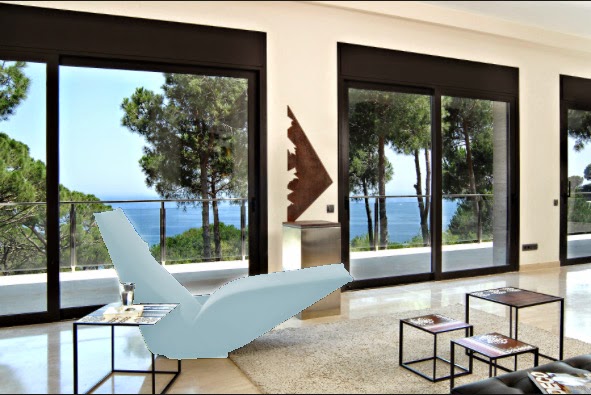Proportion & Scale
Scale refers to the size of something compared to a standard guideline or to the size of something else. Whereas proportion refers to the harmony of one part to another or as a whole to a size, quantity or degree. All materials have rational size and proportion. There are several theories of proportion that have been developed.
The Golden Section
The Golden Section was one of the earliest theories developed. It deals with mathematics based off the human body. The ratio of two section of a line or two dimensions of a plane figure where the lesser of the two is to the greater is the sum of both.
The Orders
Greeks and Romans used the Orders in their proportioning to perfect beauty and harmony. Their basic unit of measurement was none other than the diameter of the columns. The system of spacing was based on the diameter of the column. The sized of the columns varied; therefore the orders were not based on a fixed unit of measurement. However, all parts of one building was proportionate. The types of orders are Tuscan, Doric, Ionic, Corinthian and Composite.
Renaissance Theories
This Theory was developed by the numerical progression such as (1, 2, 3, 4..) and their ratios (1:2, 1:3, 2:3, 3:4) from the greek musical system by Pythagoras. This led the greeks to believe they found the key to harmony in the universe. Renaissance architects used this method to create ratios that could form proportions of an entire room.
indechouse.net
The Modulor
Architect Le Corbusier examined the measuring tools used by other civilizations when creating the Modulor. Therefore, he based the Modulor off of mathematics and the proportion of the human body. It can have an infinity of combinations.
Le Corbusier- Sainte- Marie de la Tourette
The Ken
The Ken was introduced in the latter half of Japan’s Middle Ages. It was first used to designate the interval between columns but soon became the standard for residential architecture. It became an absolute measurement. It was also used on the structure, materials, and spaces of Japanese architecture. The Ken grid orders the structure as well as the additive space to space sequence of a Japanese residence.
Anthropomorphic
Anthropometry is the measurement of the size and proportion of the human body. The anthropomorphic method seeks functional ratios that forms and spaces are containers or extensions of the human body and should be determined by its dimensions. However, the use of the method is a bit difficult because of the variations of ever human such as race, gender, age, and height. The dimensions and proportions of the human body affects how everything is used and handled.
Scale
A recap of scale it is how we perceive or judge the size of something in relation to something else. We are always comparing one thing to another. Visual scale is used to compare the size something appears to be in relation to its normal size.
Fanny Zigdon














I like your definitions, how you give some history and background about it, so I have more sense about where the theories came from.
ReplyDeleteReally good, clear explanations and nice variety in your examples!
ReplyDeleteI love how you took the time to explain the history of each design theory rather than just giving a definition of each theory. I think that by giving more background information, you helped me to understand how each of the theories are relevant in design principles today!
ReplyDeleteLove your definitions and pictures!. They are so clear and understandable.
ReplyDelete